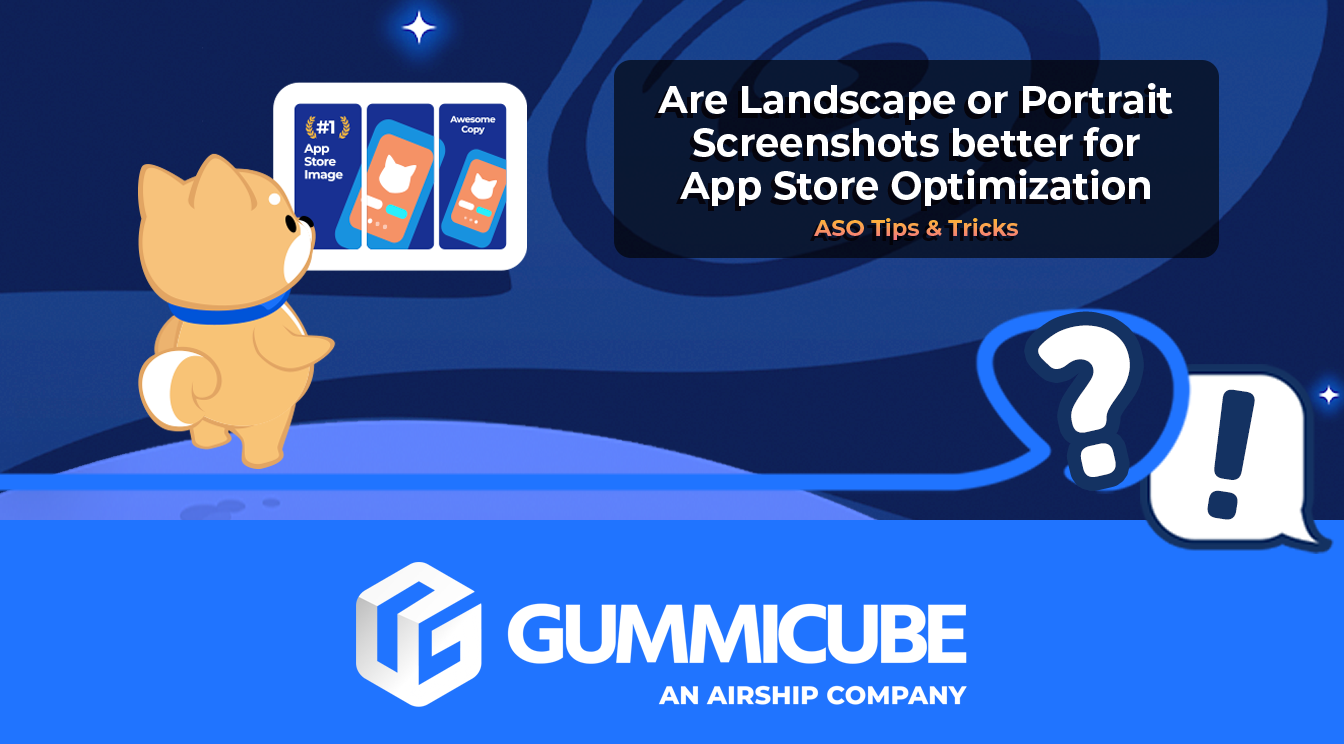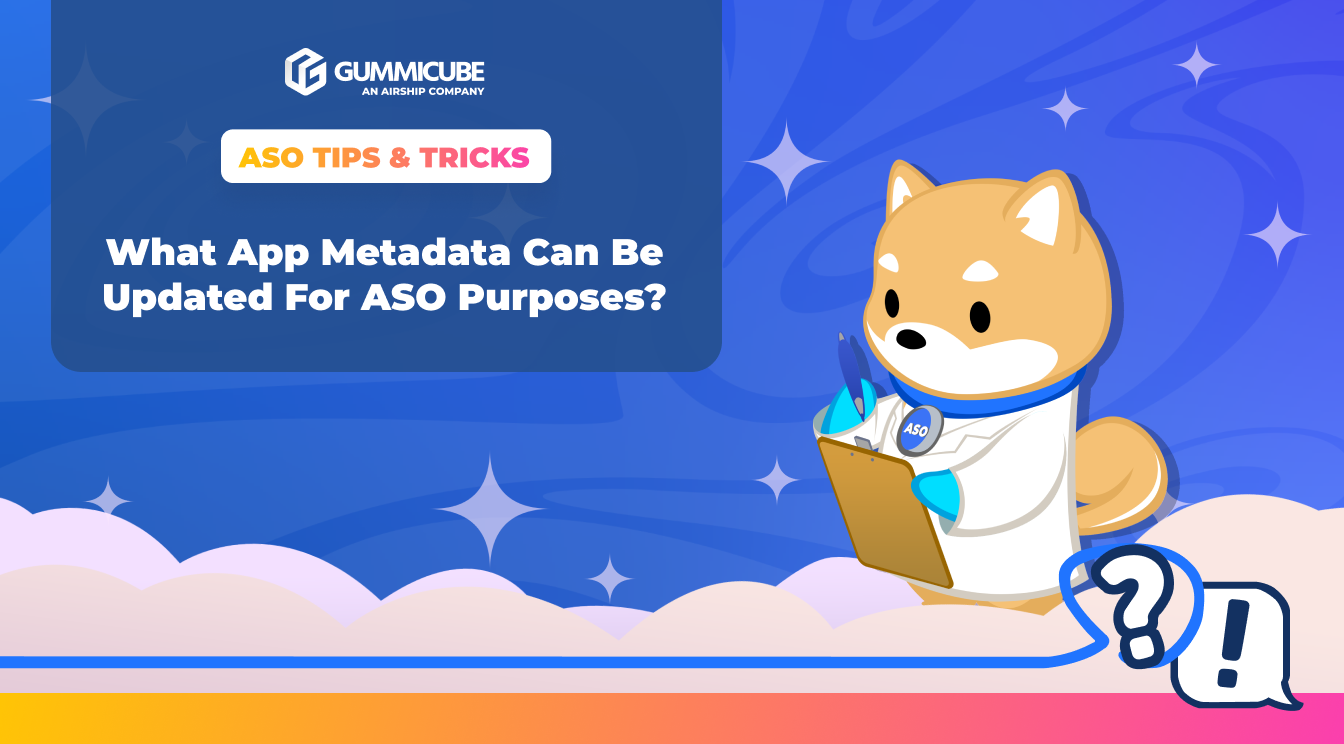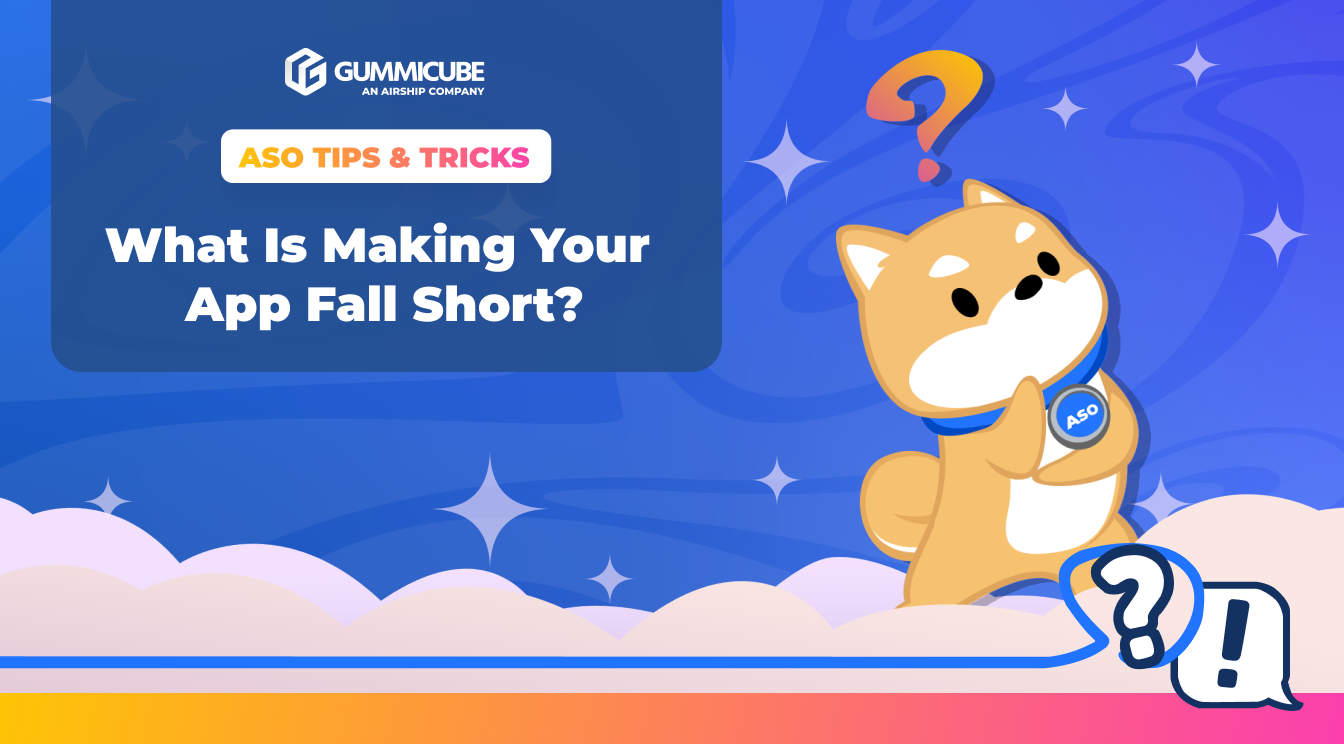
How To Perform App Keyword Research
Posted on December 10th, 2025
App keyword research is a crucial part of developing a winning ASO strategy. Read more to discover ASO tools & strategies to elevate your app listing.

App listings often rise or fall based on first impressions. Before a user even reads your app’s description, they’re already making snap judgments based on visuals. Among the creative assets you upload, screenshots and their orientation play one of the most decisive roles that can make or break how effectively your app stands out.
While App Store Optimization (ASO) involves many moving parts, screenshot orientation is one that can be easily misunderstood. Developers sometimes default to portrait or landscape without Mobile App A/B testing or considering how it impacts user perception. But just like titles and keywords, screenshots must be strategic. They need to reflect the app’s actual experience and resonate with the expectations of your target audience.
Choosing between landscape and portrait screenshots isn’t about preference. It’s about matching format to functionality and maximizing the way users engage with your store page.
This week’s ASO Tips and Tricks will walk through when to use each format, what types of apps benefit from them, and the creative principles that make screenshots more effective. With the right approach, your screenshots can increase conversions, reduce bounce rates, and give your app a competitive edge.
App store visuals don’t just decorate your listing, they drive performance. Whether someone finds your app in search results or lands on the full product page, the screenshots give users an immediate sense of value, quality, and design.
Orientation plays a direct role in how that message is delivered. On iOS, screenshots appear directly in search results, so their format influences whether a user clicks at all. On Google Play, they’re featured prominently at the top of the listing and help anchor the first impression.
The choice isn’t just about how your app looks. It’s about how users engage with it from the first second they see your listing.
Apps built to be used horizontally should reflect that in their screenshots. This applies across several categories where horizontal interfaces are the standard, not the exception.
In mobile gaming, landscape is often essential. Users expect to see actual gameplay reflected in the listing. Trying to fit a horizontal game into portrait screenshots not only misrepresents the app but can confuse or deter users altogether.
Landscape is ideal for showing:
It allows developers to present the app in its native state, giving users an accurate sneak people into what they’ll be downloading.
Framing also plays a key role. Landscape layouts give more room to emphasize critical UI components while keeping the shot cohesive. This is especially important for strategy or multiplayer games where many visual elements compete for attention.
Video-first platforms and media editing tools also benefit from landscape screenshots. Whether your app streams content, supports video editing, or offers playback tools, a horizontal view mirrors the actual usage.
Landscape screenshots are effective for:
When users expect a natural viewing or editing flow in landscape orientation, aligning your screenshots with that expectation can help showcase functionality more clearly. However, the best orientation ultimately depends on testing and which layout highlights your app’s features most effectively..
Most non-game apps operate in vertical mode. For these, portrait screenshots provide clarity, structure, and a strong visual rhythm that mirrors how users navigate the app in real life.
Portrait screenshots make it easier to walk users through workflows, features, or benefits in a sequence that feels intuitive. This orientation allows you to:
This format is useful in categories where users make decisions quickly, like finance, health, shopping, or social media.
One additional benefit comes into play on iOS. In search results, portrait screenshots push your listing farther down the screen. That added real estate creates a natural advantage, especially in competitive categories.
This layout also adapts well across devices. A properly framed portrait screenshot maintains legibility and layout integrity regardless of screen size. That consistency is critical for a polished, trustworthy appearance.
While choosing the right orientation is a strategic ASO decision, the execution of your screenshot design is what ultimately influences conversion. Whether your screenshots are portrait or landscape, they need to function as high-performing visual assets. This means presenting key value propositions, guiding user attention, and aligning with platform expectations. Strong visuals can increase install intent dramatically, while poor ones can instantly undermine trust.
Screenshots don’t just showcase your app, they sell it. They serve as visual proof that your product is polished, functional, and aligned with user needs. This is your moment to demonstrate that your app deserves to be downloaded. Here’s how to make every screenshot count:
Your first three screenshots are prime real estate. They’re visible in App Store and Google Play search results without requiring users to click into your full gallery. That means they need to deliver your app’s pitch immediately and powerfully.
Many users make download decisions based on these first images alone. These screenshots should communicate your most compelling features, answer the question “What does this app do for me?” and create curiosity about the rest of the experience. If someone only sees these three visuals, they should walk away with a clear understanding of your app’s function and benefits.
To make the most of these screenshots:
Treat this like the headline section of a landing page. Make it count.
Your screenshots should speak for themselves, but that doesn’t mean they should be silent. Text overlays help contextualize what users are seeing, but only when executed properly. Overloading an image with copy creates confusion and visual noise.
Each screenshot should focus on one core message. Think of it as a billboard: short, punchy, and instantly digestible. Use large, bold fonts that remain readable on all screen sizes. Avoid the temptation to include marketing fluff or list multiple features in one frame.
When done right, text callouts enhance your message without overpowering it:
If a user has to squint, decode, or reread your text, it’s not doing its job. Your goal is instant comprehension.
Contrast can make or break the readability of your screenshots. Even the most beautifully designed visuals fall flat if users can’t read the text or distinguish core elements. Effective contrast is not a design flourish, it’s a conversion driver.
This becomes especially important if you’re using stylized visuals, background images, or gradients. Your message should never compete with the background. Every element should stand out clearly, even at a glance, on both light and dark mode interfaces.
To ensure strong design and text contrast:
Accessible design doesn’t just benefit users with visual impairments—it helps every user make faster decisions. That’s critical in high-competition categories.
Not all users are viewing your listing from the same device. A screenshot that looks great on an iPhone 14 Pro Max might not render as clearly on an older Android phone or a tablet. That’s why it’s essential to optimize your visuals for multiple screen sizes and resolutions.
Screenshots should always be uploaded at the highest supported resolution. Avoid uploading images that appear pixelated, stretched, or misaligned. When using device frames or mockups, ensure they add value—don’t use them just for aesthetics.
To ensure your screenshots scale correctly:
Visual inconsistency or technical issues suggest low attention to detail. This will inevitably harm user perception and erode trust in your product.
While orientation affects visibility and visual flow, content still drives conversions. The best screenshots clearly communicate the app’s purpose and benefits within seconds.
Make sure your visuals:
If your app supports both orientations, you can experiment with a hybrid approach. Just ensure the transition between formats feels seamless and doesn’t disrupt visual continuity.
The key is alignment. When screenshots match the actual app experience, they build trust. And when trust is established early, conversions will follow.
Orientation isn’t just a stylistic choice. It’s a strategic tool. When your app screenshots align with how users interact with your app. Everything clicks, expectations are met, engagement increases, and downloads rise.
The best-performing app listings combine clear orientation choices with effective content, strong design, and a clear understanding of the user journey. Whether your app is portrait-first, landscape-exclusive, or somewhere in between, your creative strategy should reinforce what users can expect when they download.
Don’t treat screenshots as filler content. Treat them as front-line marketing tools that drive performance.
At Gummicube, we help top brands and developers optimize every part of their app store presence, including creative assets. From orientation testing to full screenshot redesigns, our team knows what converts. Our App Store Optimization services help any app by incorporating real mobile users and data-backed insights.
Whether you're building a game, utility, or social app, we’ll help you craft visuals that support your goals and improve performance across both iOS and Google Play.
Want to improve your screenshot strategy? Let’s chat.

App keyword research is a crucial part of developing a winning ASO strategy. Read more to discover ASO tools & strategies to elevate your app listing.

Optimizing metadata is one of the most high-impact actions developers can take to strengthen their App Store presence. Read more to discover winning strategies.

App seasonality is one of the most powerful and most overlooked opportunities in ASO. Ignoring it means missing moments when users are searching most actively.